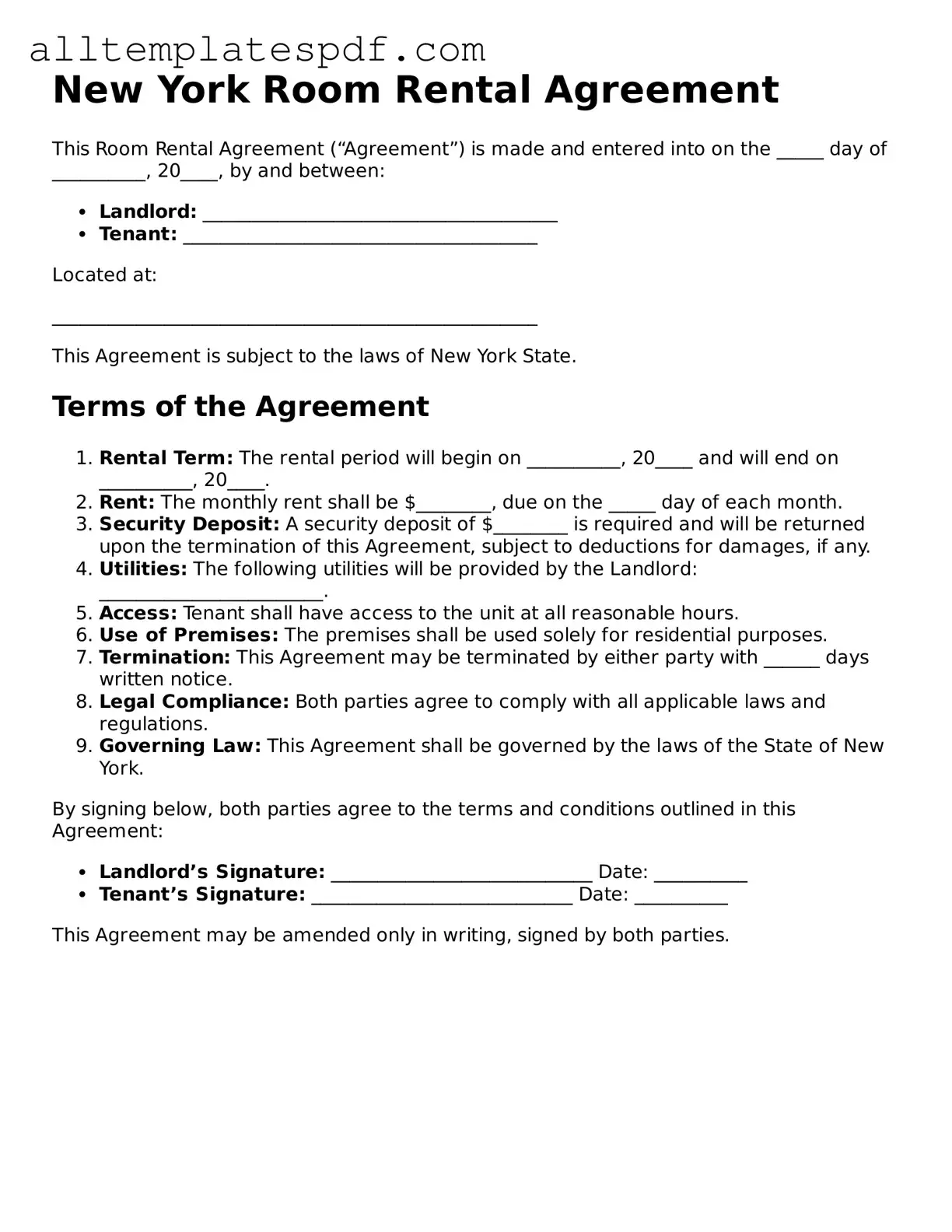Filling out the New York Room Rental Agreement form can seem straightforward, but many people make common mistakes that can lead to confusion or disputes later on. One frequent error is not providing complete information. When details like the names of all parties involved or the address of the rental property are missing, it can create problems down the line.
Another common mistake is failing to read the entire agreement before signing. Many individuals skim through the document, overlooking important clauses. This can result in misunderstandings about responsibilities, such as maintenance obligations or payment terms.
Some people forget to include the rental amount and due date. This information is crucial for both the landlord and tenant. Without it, there may be disagreements about when rent is due or how much should be paid.
Another mistake involves not specifying the duration of the rental agreement. Whether it’s a month-to-month arrangement or a fixed-term lease, clarity is essential. Without this detail, both parties may have different expectations about how long the agreement lasts.
In addition, neglecting to sign and date the form is a common oversight. An unsigned agreement is not legally binding. This can leave both parties without protection if disputes arise.
Some individuals also fail to include any additional terms or conditions that may be important to the rental situation. For example, rules about pets, smoking, or guests should be clearly stated to avoid future conflicts.
Not keeping a copy of the signed agreement is another mistake that can lead to issues. Both parties should retain a copy for their records. This ensures that everyone has access to the same information if questions come up later.
Lastly, misunderstanding the security deposit terms can create problems. It’s important to specify the amount, conditions for its return, and any deductions that may apply. Without this clarity, disputes over the security deposit can easily arise.
